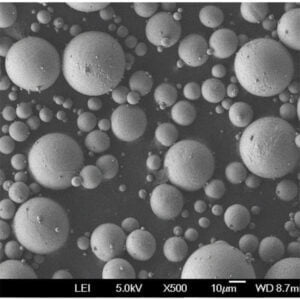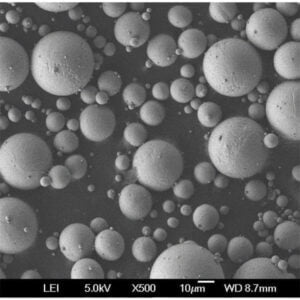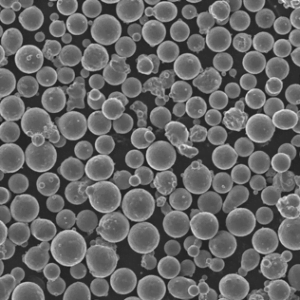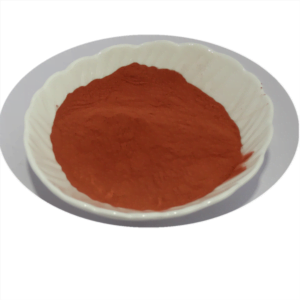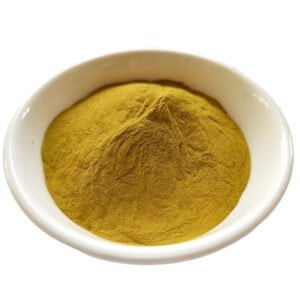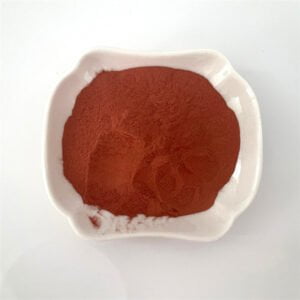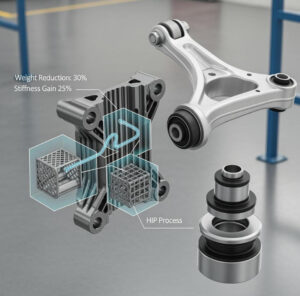Powder Making Technology
Table of Contents
Overview of Powder Making Technology
Powder making technology has revolutionized numerous industries, offering a versatile approach to creating metal powders with specific properties tailored to various applications. This technology encompasses various processes, including atomization, mechanical alloying, and electrolysis, each with unique advantages and limitations. As industries evolve, the demand for high-quality metal powders continues to grow, driving innovation in powder production methods.
Key Details of Powder Making Technology
| Process | Description | Applications |
|---|---|---|
| Atomization | Involves breaking down a molten metal stream into fine droplets that solidify into powders. | Aerospace, automotive, additive manufacturing |
| Mechanical Alloying | Blends powders through high-energy ball milling to create alloy powders. | Metallurgy, electronics, nanotechnology |
| Electrolysis | Utilizes electrochemical reactions to produce high-purity metal powders. | Batteries, catalysts, chemical industries |
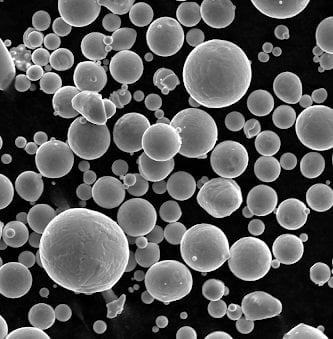
Types of Metal Powders and Their Models
Metal powders vary widely in composition, size, and properties, making them suitable for different applications. Here are some specific metal powder models:
- Aluminum Powder (Al-1001)
Composition: Pure aluminum
Properties: Lightweight, high thermal conductivity, corrosion-resistant
Applications: Aerospace components, automotive parts, electronics - Copper Powder (Cu-2002)
Composition: Pure copper
Properties: Excellent electrical and thermal conductivity, malleable
Applications: Electrical contacts, heat exchangers, conductive inks - Iron Powder (Fe-3003)
Composition: Pure iron
Properties: Magnetic, high strength, good ductility
Applications: Magnetic materials, automotive components, machinery - Nickel Powder (Ni-4004)
Composition: Pure nickel
Properties: Corrosion-resistant, high melting point, good conductivity
Applications: Batteries, superalloys, coatings - Titanium Powder (Ti-5005)
Composition: Pure titanium
Properties: High strength-to-weight ratio, corrosion-resistant, biocompatible
Applications: Medical implants, aerospace components, sporting goods - Stainless Steel Powder (SS-6006)
Composition: Iron-chromium-nickel alloy
Properties: Corrosion-resistant, high strength, durable
Applications: Surgical instruments, kitchenware, automotive parts - Cobalt-Chromium Powder (CoCr-7007)
Composition: Cobalt-chromium alloy
Properties: High wear resistance, biocompatible, high melting point
Applications: Medical implants, dental prosthetics, aerospace - Tungsten Powder (W-8008)
Composition: Pure tungsten
Properties: High density, high melting point, hard
Applications: Cutting tools, radiation shielding, aerospace - Silver Powder (Ag-9009)
Composition: Pure silver
Properties: Highest electrical conductivity, antimicrobial, malleable
Applications: Electrical contacts, medical devices, jewelry - Gold Powder (Au-1010)
Composition: Pure gold
Properties: Excellent corrosion resistance, high electrical conductivity, biocompatible
Applications: Electronics, medical devices, luxury goods
Applications of Powder Making Technology
Metal powders find applications in various fields, leveraging their unique properties to enhance product performance and manufacturing efficiency.
| Application | Description | Examples |
|---|---|---|
| Additive Manufacturing | Utilizes metal powders to create complex, high-precision parts layer by layer. | Aerospace components, medical implants |
| Metallurgy | Enhances properties of metals through powder blending and sintering. | High-strength alloys, wear-resistant parts |
| Electronics | Metal powders are used in conductive pastes and components. | Conductive inks, circuit boards |
| Automotive | Improves fuel efficiency and performance with lightweight components. | Engine parts, brake pads |
| Medical | Biocompatible metal powders for implants and prosthetics. | Hip replacements, dental implants |
| Aerospace | High-performance materials for critical aerospace applications. | Turbine blades, structural components |
| Chemical Industry | Catalysts and filters made from specific metal powders. | Chemical reactors, filtration systems |
Specifications, Sizes, Grades, and Standards
When selecting metal powders, it’s crucial to consider their specifications, sizes, grades, and standards to ensure they meet the requirements of your application.
| Model | Size Range (µm) | Grade | Standards |
|---|---|---|---|
| Al-1001 | 10-45 | A | ASTM B-214 |
| Cu-2002 | 15-63 | B | ISO 4288 |
| Fe-3003 | 5-150 | C | ASTM E-1079 |
| Ni-4004 | 10-90 | A | ISO 9001 |
| Ti-5005 | 20-100 | B | ASTM F-67 |
| SS-6006 | 25-75 | C | ASTM A-240 |
| CoCr-7007 | 15-45 | A | ISO 5832-12 |
| W-8008 | 1-150 | B | ASTM B-777 |
| Ag-9009 | 5-50 | A | ISO 10993-1 |
| Au-1010 | 2-20 | B | ASTM B-488 |
Suppliers and Pricing Details
Finding the right supplier for metal powders is crucial to ensure quality and cost-effectiveness. Here are some key suppliers and indicative pricing details:
| Supplier | Location | Models Available | Pricing (per kg) |
|---|---|---|---|
| Metal Powders Co. | USA | Al-1001, Cu-2002, Fe-3003 | $50 – $200 |
| PowderTech Ltd. | Germany | Ni-4004, Ti-5005, SS-6006 | $100 – $500 |
| Alloy Solutions Inc. | China | CoCr-7007, W-8008, Ag-9009 | $200 – $1000 |
| Pure Metals Corp. | Japan | Au-1010, Al-1001, Cu-2002 | $500 – $2000 |
| Advanced Powders | UK | Fe-3003, Ni-4004, Ti-5005 | $75 – $400 |
Comparing Pros and Cons of Powder Making Technology
Understanding the advantages and limitations of different powder making technologies can help in selecting the best method for your needs.
| Technology | Advantages | Limitations |
|---|---|---|
| Atomization | High production rate, fine and spherical powders, versatile | High energy consumption, expensive equipment |
| Mechanical Alloying | Produces uniform alloys, ability to create unique materials | Long processing times, potential contamination |
| Electrolysis | High purity powders, precise control over composition | Limited to certain metals, lower production rate |
| Chemical Reduction | Cost-effective for specific metals, scalable | Environmental concerns, complex processing |
| Centrifugal Atomization | Controlled particle size distribution, minimal oxidation | Limited to specific applications, higher operational costs |
Advantages of Powder Making Technology
Powder making technology offers numerous benefits that make it a preferred choice in various industries.
- Versatility: Powder making technology can produce powders of different compositions and sizes, suitable for diverse applications.
- Precision: Advanced techniques ensure precise control over particle size and composition, resulting in high-quality products.
- Efficiency: Processes like atomization and mechanical alloying allow for high production rates, meeting industrial demands efficiently.
- Customization: Metal powders can be tailored to meet specific requirements, such as enhanced strength, conductivity, or biocompatibility.
- Sustainability: Some powder production methods, such as mechanical alloying, can utilize recycled materials, promoting sustainability.
Disadvantages of Powder Making Technology
Despite its advantages, powder making technology has certain limitations that must be considered.
- High Costs: The equipment and energy required for some powder production methods, like atomization, can be expensive.
- Complexity: Processes like mechanical alloying require specialized knowledge and equipment, making them complex to implement.
- Environmental Impact: Certain methods, such as chemical reduction, can have negative environmental impacts due to the use of hazardous chemicals.
- Limitations in Material Selection: Not all metals can be processed efficiently using every powder making technique, limiting their applicability.
- Quality Control: Ensuring consistent quality across large batches of powder can be challenging, requiring stringent quality control measures.
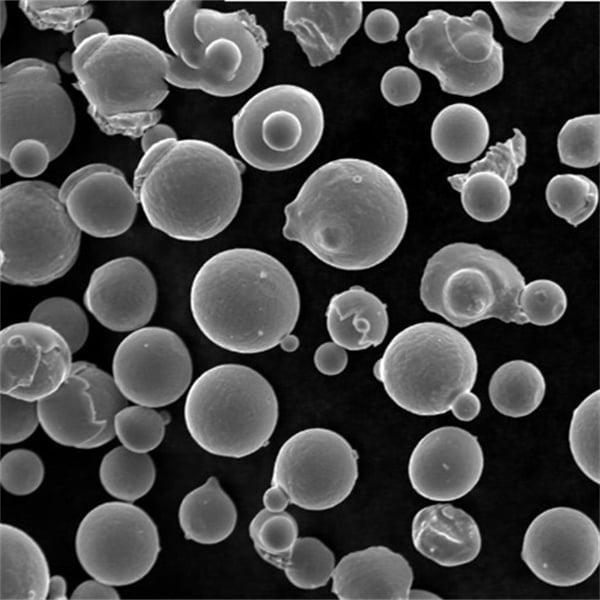
FAQ
What is powder making technology?
Powder making technology encompasses various methods used to produce fine metal powders for industrial applications. These methods include atomization, mechanical alloying, and electrolysis, each offering unique advantages
What is powder making technology?
Powder making technology refers to the processes used to create fine particles (powder) from bulk materials. These materials can be metals, plastics, ceramics, food products, and even pharmaceuticals. There are many different techniques, each with its own advantages and suited for creating powders with specific properties.
What are some applications of powder making technology?
- Additive manufacturing (3D printing): Powders are a key material for 3D printing processes like Selective Laser Sintering (SLS) and Selective Laser Melting (SLM).
- Powder metallurgy: Metal powders are used to create complex shapes through compaction and sintering.
- Coatings: Powders are used in paints, inks, and other coatings for protection, decoration, and adding functionality.
- Pharmaceuticals: Powders are a common dosage form for medications.
- Food: Powdered milk, coffee, and sugar are all examples of food products made using powder technology.
Types of Powder Making Techniques:
- Atomization: Molten metal is broken up into fine droplets using a gas or water stream, which solidify into spherical particles. This is a common method for metal powders.
- Grinding: Bulk material can be ground into a powder, but this method results in irregularly shaped particles. It’s often used for brittle materials.
- Electrolysis: An electric current is used to break down a metal compound into its elements, one of which may be a powder.
- Precipitation: A solution is used to create fine particles of a material, often used for plastics or pharmaceuticals.
know more 3D printing processes
Frequently Asked Questions (Advanced)
1) What quality metrics matter most across Powder Making Technology methods?
- Core KPIs: particle size distribution (D10/D50/D90), morphology/sphericity, flowability (Hall/Carney flow), apparent/tap density, oxygen/nitrogen content (for metals), specific surface area (BET), and residual contaminants (S, Cl, Na). These govern spreadability, packing, sinterability, and reactivity.
2) How do gas vs. water atomization compare for metal powder performance?
- Gas atomization (argon/nitrogen) yields spherical powders with lower oxide content and better flow—preferred for additive manufacturing (LPBF/DED). Water atomization produces irregular particles with higher surface oxides—cost-effective for press-and-sinter or Binder Jetting after de-oxidation/anneal.
3) When is mechanical alloying superior to melt routes?
- For non-equilibrium or oxide‑dispersion‑strengthened (ODS) alloys, nanostructured compounds, or systems with large melting point disparities. Mechanical alloying enables solid-state diffusion and fine precipitate dispersion but risks contamination and requires careful process control.
4) What in-line/at-line controls improve lot-to-lot consistency?
- Melt superheat and gas-to-metal ratio (atomization), closed-loop PSD classification, in-line oxygen/moisture sensing, acoustic/optical particle monitoring, and automated sieving. For milling routes, torque/temperature logging and atmosphere (Ar/N2/vacuum) control limit contamination.
5) How should powder reuse be managed in additive manufacturing workflows?
- Track genealogy with digital passports per ISO/ASTM 52907, sieve each cycle, blend 20–50% virgin feedstock, and set stop criteria: Hausner ratio >1.25, Hall flow drift >15%, O increase >0.02 wt% (alloy-dependent), or out-of-spec PSD tails.
2025 Industry Trends
- Digital powder passports: Broad adoption links powder genealogy, PSD, interstitials, and reuse cycles to part serials—now common in aerospace/medical audits.
- Sustainability and cost: Argon recirculation, heat recovery on atomization towers, and verified recycled content streams (≥40–60%) embedded in RFQs.
- Inline sensing: Optical/acoustic PSD estimation and real-time oxygen/moisture monitoring reduce scrap and narrow spec windows.
- AM-focused spheroidization: Plasma spheroidization and de-oxidation to lower satellites and oxygen for reflective alloys (Al, Cu).
- Safety by design: DHA-first (Dust Hazard Analysis), improved LEV testing, and intrinsically safe equipment for combustible powders per NFPA 484.
2025 Snapshot: Powder Making Technology KPIs
| KPI | 2023 Baseline | 2025 Estimate | Relevance |
|---|---|---|---|
| Oxygen in gas-atomized stainless powders (wt%) | 0.10–0.18 | 0.07–0.12 | Improves AM density and ductility |
| Satellite fraction after atomization (%) | 10–20 | 5–12 | Better spreadability and surface finish |
| Share of powders with digital passports (%) | 20–30 | 45–65 | Traceability and QA |
| Energy savings via argon recirculation (%) | 0–10 | 10–25 | Lower OPEX/ESG impact |
| Inline PSD monitoring adoption (%) | Pilot | 25–40 | Tighter lot control |
Selected references:
- ISO/ASTM 52907 (metal powder quality), ISO/ASTM 52941 (machine control) — https://www.iso.org
- ASTM B214 (sieve analysis), B212/B213 (density/flow), E2491 (PSD by laser diffraction) — https://www.astm.org
- NFPA 484 (Combustible Metals) — https://www.nfpa.org
- ASM Handbook Vol. 7 (Powder Metallurgy), Vol. 24 (Additive Manufacturing) — https://www.asminternational.org
Latest Research Cases
Case Study 1: Inline Oxygen Control in Gas Atomization for AM-Grade Steel Powders (2025)
- Background: An AM powder supplier faced variable oxygen causing porosity drift in LPBF parts.
- Solution: Implemented vacuum induction melting + inert gas atomization (VIGA) with inline oxygen/moisture sensors, closed-loop argon recirculation, and post-process plasma spheroidization.
- Results: Oxygen reduced from 0.14 wt% avg to 0.09 wt%; satellite fraction −35%; LPBF relative density improved to 99.93% avg; customer scrap −20%.
Case Study 2: Mechanical Alloying of ODS Ni-Based Alloy for High-Temp Filters (2024)
- Background: An energy OEM needed creep-resistant porous structures beyond conventional sintered Ni alloys.
- Solution: High-energy ball milling of Ni + Y2O3 with controlled atmosphere; compaction and sintering with tailored pore former; QA via BET and micro-CT.
- Results: Creep life at 800°C +28% vs baseline; pore size CV reduced from 22% to 11%; pressure drop decreased 12% at equal filtration efficiency.
Expert Opinions
- Prof. Randall M. German, Powder Metallurgy Expert
- Viewpoint: “Gas-to-metal ratio and superheat remain the levers for PSD; pair them with real-time sensing to make atomization repeatable rather than empirical.”
- Dr. Christina Noguez, Senior Scientist, Fraunhofer IFAM
- Viewpoint: “Surface chemistry—the oxide and adsorbed moisture layer—often dictates downstream success more than bulk alloy, especially for AM and Binder Jetting.”
- James Sears, VP Technology, Carpenter Additive
- Viewpoint: “Digital material passports connecting powder lots to in-process telemetry are rapidly becoming a qualification requirement, not a bonus.”
Practical Tools/Resources
- Standards and QA
- ISO/ASTM 52907 (powder quality for AM), ASTM B212/B213/B214/B527 (density, flow, sieving, tap density)
- Safety and compliance
- NFPA 484 guidance and DHA templates; OSHA/ATEX resources for combustible dust management — https://www.nfpa.org | https://www.osha.gov
- Characterization and data
- NIST AM Bench datasets; laser diffraction PSD (ASTM E2491); gas fusion O/N analysis
- Design and processing
- ASM Handbook Vol. 7 and Vol. 24; OEM parameter notes for LPBF/DED powders; simulation tools (Ansys Additive, Simufact Additive) for spreadability/distortion planning
- Sustainability
- Environmental Product Declarations (EPDs) for copper/steel/aluminum powders; argon recirculation best practices whitepapers from OEMs
Last updated: 2025-10-17
Changelog: Added advanced FAQ focused on QA metrics, atomization comparisons, mechanical alloying use cases, inline controls, and AM reuse; 2025 trend snapshot with KPI table; two recent case studies (inline O2 control in atomization; ODS Ni via mechanical alloying); expert viewpoints; and curated standards/safety/resources
Next review date & triggers: 2026-04-30 or earlier if ISO/ASTM powder standards are revised, inline monitoring adoption exceeds 50%, or validated datasets show ≥25% improvement in AM density via new spheroidization methods
Share On
MET3DP Technology Co., LTD is a leading provider of additive manufacturing solutions headquartered in Qingdao, China. Our company specializes in 3D printing equipment and high-performance metal powders for industrial applications.
Inquiry to get best price and customized Solution for your business!
Related Articles
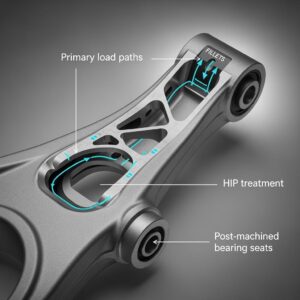
Metal 3D Printing for U.S. Automotive Lightweight Structural Brackets and Suspension Components
Read More »About Met3DP
Recent Update
Our Product
CONTACT US
Any questions? Send us message now! We’ll serve your request with a whole team after receiving your message.







